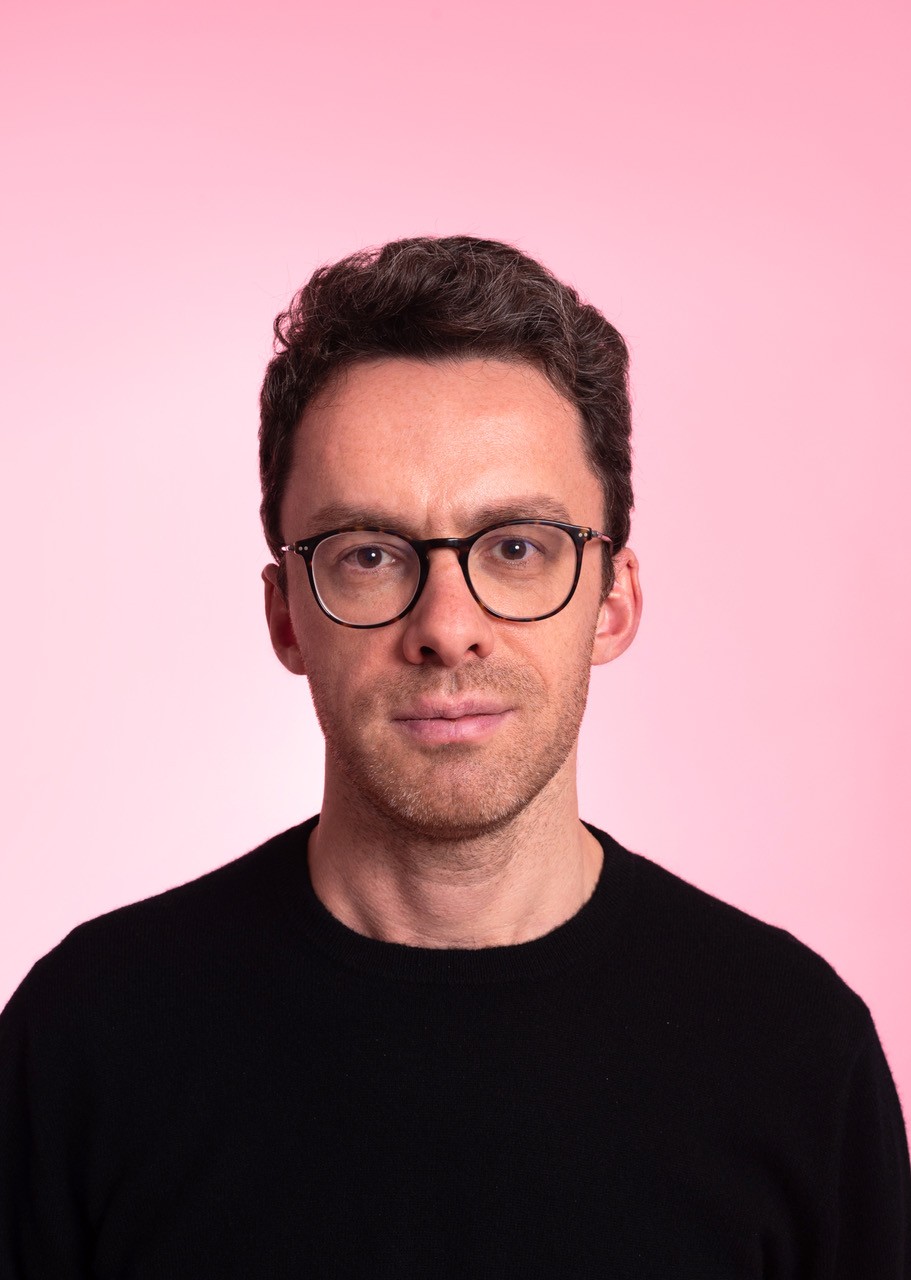His paintings, drawings and sculptures are populated by shapes that could have emerged from a computer screen, a magazine or perhaps even a comic book: The visual spheres artist Thomas Scheibitz, born in 1968, creates are certainly not easy to classify. They conjure up elements of graphic user interfaces, empty file windows and cursors, speech bubbles and panels, as well as fragments of letters. Here and there one begins to recognize figures or pairs of eyes in Scheibnitz’s not quite representational yet not quite abstract compositions. In fact, these are amalgamations of shapes resulting from a sustained artistic working process.
Thomas Scheibitz grew up in Radeberg near Dresden, and studied at the Dresden Academy of Fine Arts between 1991 and 1998. In contrast to the stylistic stamp of the “Leipzig school”, the teaching in Dresden was focused more on painting technique and craftsmanship. Scheibitz was therefore able to develop his approach in an environment characterized by experimentation and open to new developments without having to emulate an all-powerful professor. Today Scheibitz distances himself from any overly great proximity to craftsmanship. He sees the painting process as a “tool”. He also recounts that during his studies, he was particularly drawn to the collection of old masters at the Dresden Zwinger.
He continually fills up sketch books
After completing his studies, he put on several solo exhibitions at the Lehmann Brothers Gallery in Dresden. Even around the turn of the millennium Scheibitz’s works already appeared “formulated” in their combination of graphic-geometric forms, figurative elements and contrast-laden passages led purely by the materiality of paint. In preparation of his larger works, Scheibitz creates numerous drawings in A4 format. He continually fills up sketch books. On top of this, Scheibitz draws on his own collection of “found” images from newspapers, commercials, reportages, comics and illustrated books of older art, all without consideration of “high” or “low”.

Thomas Scheibitz, Turm, Image via thomasscheibitz.de
In the year 2005 Thomas Scheibitz joined Tino Sehgal in defining the interior of the German Pavilion at the Venice Biennial. Alongside a number of paintings, he also presented a large scale group of sculptures. The partially painted objects, sometimes piled on top of each other, gave off the impression of oscillating between furniture, set design and sculpture. Scheibitz here expanded his approach into the world of objects without abandoning the formal vocabulary he had previously established in his painting practice. This gave rise to a hybrid form, which the artist was to elaborate further in the years that followed.
Corresponding and interweaving
In the autumn of 2012 Scheibitz’s solo exhibition “One-Time Pad” opened at Frankfurt’s Museum für Moderne Kunst. The MMK showed not only a broad range of paintings, preparatory drawings and sculptures, but also sketchbooks and examples of Scheibnitz’s image collection. The show demonstrated the extent to which the various artistic media Scheibitz employs correspond and interweave in his work. His sculptures and objects, his drawings and paintings are based on the same complex of sketches and ideas. Scheibitz works on blurring the boundaries between representational and abstract, painting and sculpture.

Thomas Scheibitz, One-Time Pad, 2012/13, MMK Museum für Moderne Kunst, Frankfurt am Main, Image via thomasscheibitz.de
In the catalogue for the exhibition Pioneers of the Comic Strip. A Different Avant-Garde, Thomas Scheibitz formulates his own personal thoughts on early comics. “Perhaps we need to honor the memory of the unknown printer, who managed to inject color into newspaper printing. It was thanks to these workers that the figure of the Yellow Kid was able to unfold its full aesthetic impact”, he writes. Scheibitz also mentions Wilhelm Busch: “The comic strips with accompanying text on Max and Moritz are hard to beat in terms of their wit and joie de vivre, and sometimes even their Schadenfreude.” Among the artists in the exhibition, Scheibitz particularly values Winsor McCay’s “exuberant fantasy”, as well as George Herriman’s “minimalist formal language”. He also pays tribute to Lyonel Feininger for what we now know to be his pioneering movement between the worlds of “commercial” and “high” art.
